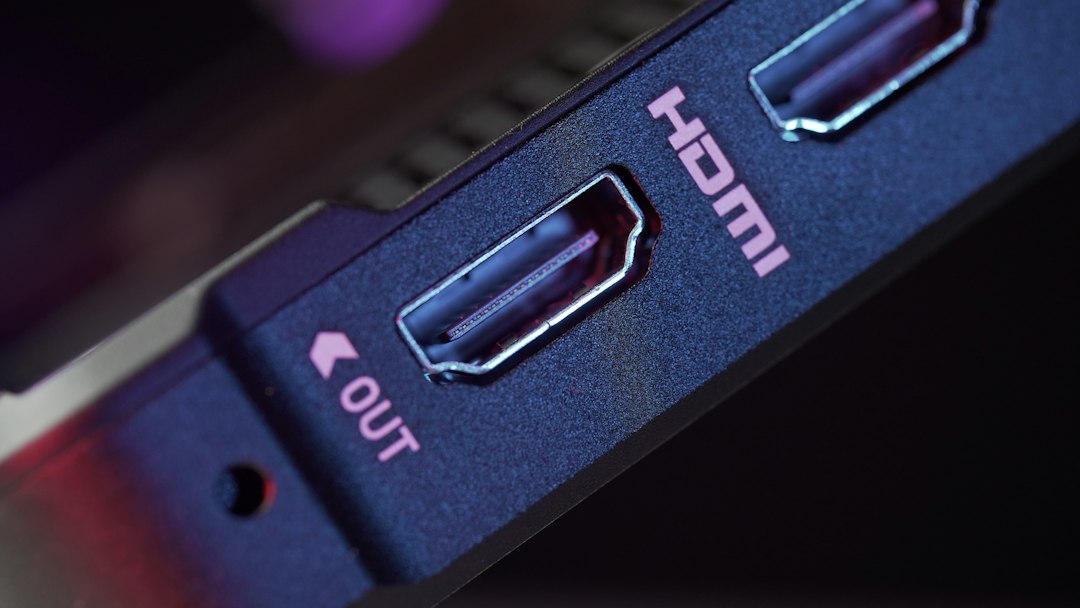Troubleshooting Common Issues with HDMI Switches
February 05 2024 – Tendak

Having an HDMI switch is a convenient solution for connecting multiple devices to your TV or monitor without constantly swapping cables. However, like any electronic device, HDMI switches can sometimes encounter issues that may hinder their performance. In this article, we will explore some common problems that users face with HDMI switches and provide troubleshooting tips to help you resolve them.
1. No Signal
One of the most common issues with HDMI switches is the lack of signal output. If you're experiencing this problem, there are a few steps you can take to fix it:
a) Check the cables: Ensure that all the HDMI cables are securely connected to both the devices and the HDMI switch. Sometimes, loose connections can result in a loss of signal.
b) Switch inputs: HDMI switches often have multiple input ports. Try switching to a different input port on the switch to see if the signal is being recognized.
c) Test the devices: Connect each device directly to your TV or monitor to make sure they are functioning properly. If the devices work individually but not when connected through the HDMI switch, there may be an issue with the switch.
2. HDCP Errors
HDCP (High-bandwidth Digital Content Protection) is a copy protection technology that prevents unauthorized duplication of copyrighted content. When using an HDMI switch, you may sometimes encounter HDCP errors, which can prevent the playback or streaming of protected content. Here are a few solutions:
a) Update firmware: Check if there are any firmware updates available for your HDMI switch. Outdated firmware can sometimes cause compatibility issues with newer devices and content.
b) Disable HDCP: Some HDMI switches have an option to disable HDCP. However, note that disabling HDCP may restrict your access to certain copyrighted content.
c) Connect directly: If the HDCP error persists, consider connecting the source device directly to the TV or monitor to bypass the HDMI switch. This method may bypass the HDCP protection but should only be used with legal content.
3. Resolution and Image Quality Issues
Another common problem with HDMI switches relates to resolution and image quality. If you're noticing blurry or distorted images, or resolution mismatches, try the following troubleshooting steps:
a) Check device compatibility: Ensure that all connected devices, including the HDMI switch, support the desired resolution. Some HDMI switches may not support higher resolutions like 4K (3840x2160), resulting in degraded image quality.
b) Use certified cables: Faulty or low-quality HDMI cables can also cause resolution and image quality issues. Invest in certified high-speed HDMI cables that are capable of transmitting higher resolutions.
c) Adjust display settings: Access the display settings on your TV or monitor to ensure they are set to the optimal resolution. Sometimes, the TV or monitor may not automatically detect the correct resolution when using an HDMI switch.
4. Audio Issues
If you're experiencing problems with audio when using an HDMI switch, follow these troubleshooting steps:
a) Check audio settings: Ensure that the audio output settings on your devices and TV or monitor are correctly configured. Some HDMI switches have dedicated audio settings that need to be adjusted to enable audio pass-through.
b) Test another audio source: Connect a different audio source to the TV or monitor through the HDMI switch to determine if the issue is with a specific device. This can help identify whether the problem lies with the HDMI switch or one of the connected devices.
c) Update firmware and drivers: Ensure that the firmware of your HDMI switch and the drivers of your connected devices are up to date. Outdated firmware and drivers can sometimes cause audio compatibility issues.
5. Remote Control Problems
Many HDMI switches come with a remote control for convenient switching between devices. If you're facing issues with the remote control, try these troubleshooting steps:
a) Check the battery: Ensure that the battery in the remote control is not depleted. Replace it with a fresh battery if necessary.
b) Clear obstructions: Make sure there are no obstructions between the remote control and the HDMI switch. Remove any objects that may be blocking the signal.
c) Test the remote: Try using the remote control directly in front of the HDMI switch. If it works, the issue may lie with the range or angle of the remote control signal.
Conclusion
Investing in an HDMI switch can simplify your home entertainment setup, but it's essential to troubleshoot common issues that may arise. By following the troubleshooting tips mentioned in this article, you can resolve many of the typical problems experienced with HDMI switches. Remember to check the cables, update firmware, ensure device compatibility, and adjust settings to optimize the performance of your HDMI switch. With these steps in mind, you'll be able to enjoy seamless connectivity and uninterrupted viewing experiences with your HDMI switch.